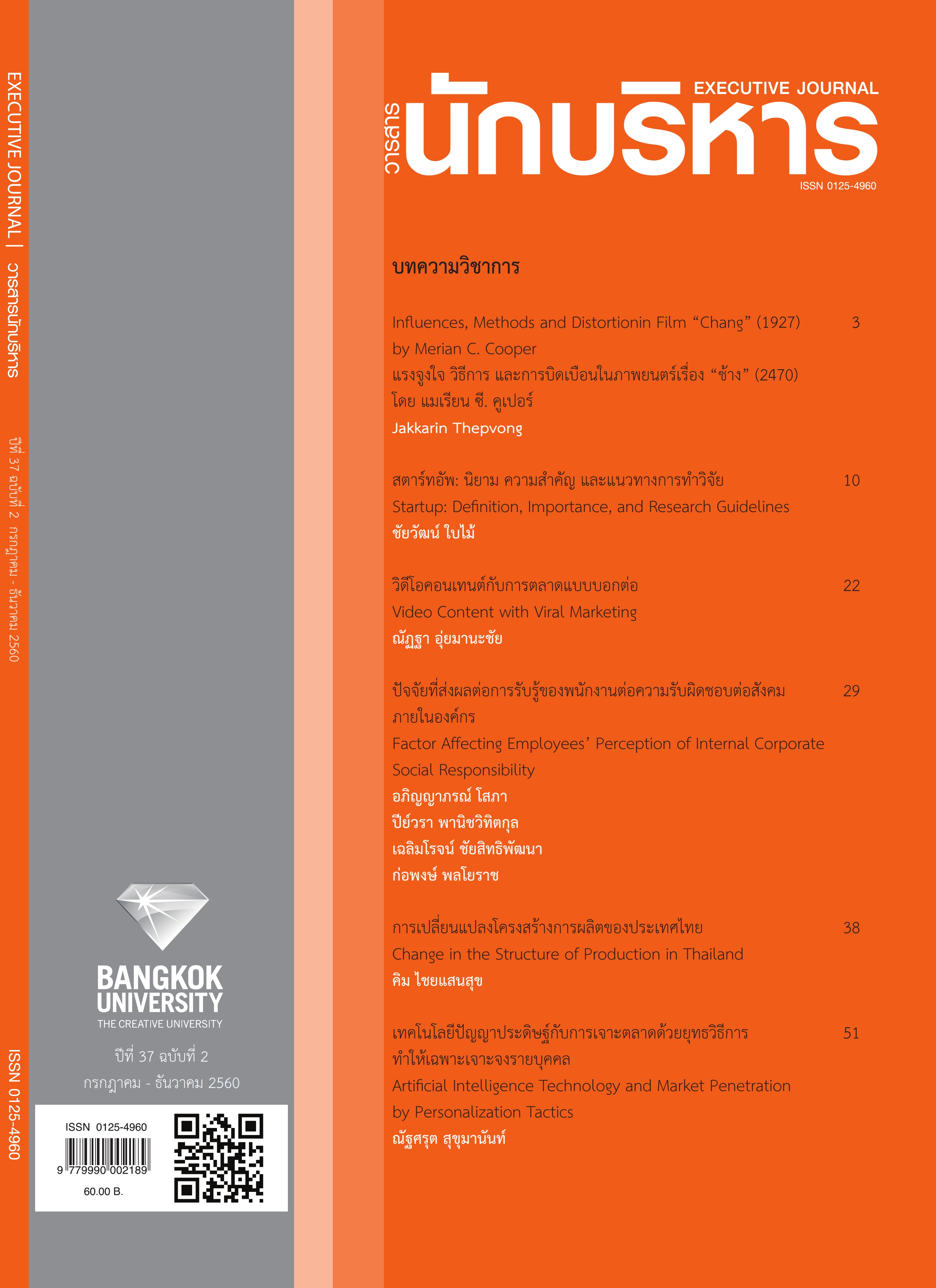Change in the Structure of Production in Thailand
Main Article Content
Abstract
This article aims to investigate the causes of change in the structure of production in Thailand over the past 60 years. It was found that in 1960 the agricultural sector accounted for 33.41 percent of GDP, the industrial sector 14.47 percent and the mining and quarrying sector only 0.08 percent of GDP. In the year 2016, this proportion significantly changed. The proportion of the agricultural sector declined to 8.33 percent of GDP while the industrial sector increased to 27.43 percent of GDP and the mining and quarrying sector also increased to 2.76 percent of GDP, respectively. As a result, Thailand has been changed from an agricultural country into a newly industrialized country (NIC) or newly industrialized economy (NIE). The three main factors contributing to the change in the production structure were: 1) the government policy on industrial promotion implemented by public organizations, 2) the Plaza Accord incident, 3) the Asian NICs phenomenon, and 4) other factors.
บทคัดย่อ
บทความนี้มีวัตถุประสงค์เพื่อค้นหาสาเหตุที่ทำให้เกิดการเปลี่ยนแปลงโครงสร้างการผลิต ในประเทศไทยในรอบระยะเวลาประมาน 60 ปีที่ผ่านมา พบว่าใน ค.ศ. 1960 ภาคเกษตรกรรมมีสัดส่วนใน GDP ร้อยละ 33.41 ในขณะที่สาขาอุตสาหกรรม มีสัดส่วนร้อยละ 14.47 และสาขาเหมืองแร่และการย่อยหินมีสัดส่วนเพียงร้อยละ 0.08 ของ GDP ต่อมาใน ค.ศ. 2016 สัดส่วนดังกล่าวได้เปลี่ยนแปลงไปอย่างมีนัยสำคัญ ภาคเกษตรกรรมมีสัดส่วนลดลง อยู่ที่ร้อยละ 8.33 ของ GDP ขณะที่สาขาอุตสาหกรรม เพิ่มขึ้นเป็นร้อยละ 27.43 ของ GDP และสาขาเหมืองแร่และการย่อยหินเพิ่มขึ้นมาเป็นร้อยละ 2.76 ของ GDP สถานะดังกล่าวทำให้ประเทศไทยปรับเปลี่ยนจากประเทศเกษตรกรรมกลายมาเป็นประเทศอุตสาหกรรมใหม่ โดยพบว่า สาเหตุหลักที่ทำให้เกิดการเปลี่ยนแปลงโครงสร้างการผลิตดังกล่าวเกิดจากปัจจัยสำคัญสามประการคือ 1) นโยบายการส่งเสริมอุตสาหกรรมของรัฐบาลและส่วนราชการไทยในอดีต 2) วิกฤติการณ์แข็งค่าของเงินเยนญี่ปุ่น (เหตุการณ์ Plaza Accord) 3) ปรากฏการณ์ Asian NICs และ 4) สาเหตุอื่นๆ
Article Details
The manuscript submitted for publication must be the original version, submitted only to this particular journal with no prior acceptance for publication elsewhere in other academic journals. The manuscript must also not violate the copyright issue by means of plagiarism.


